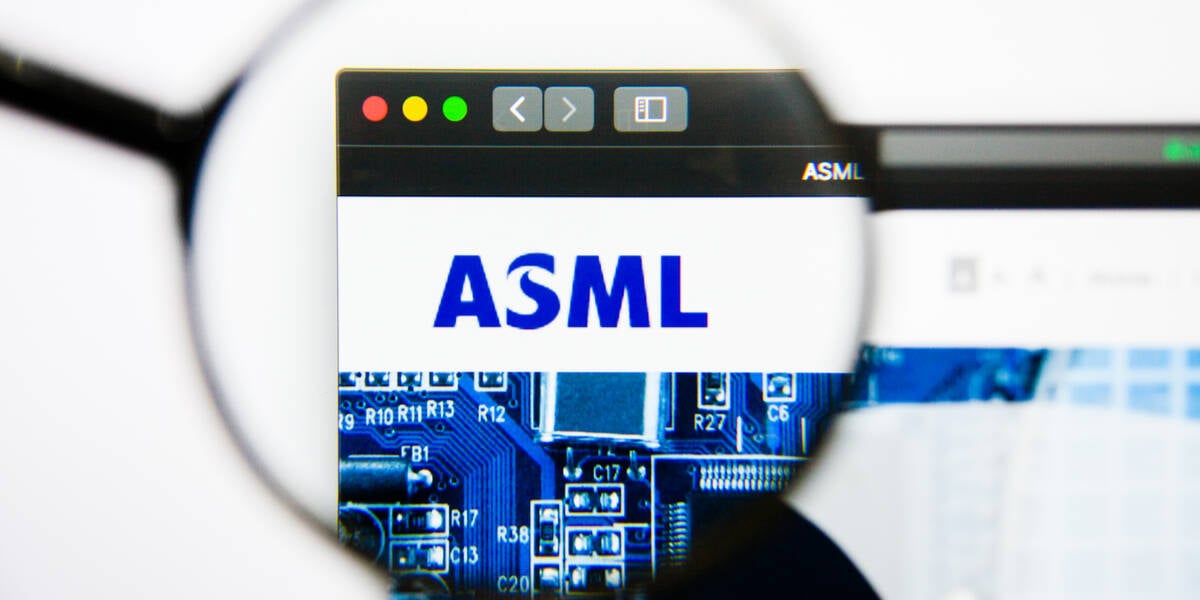ASML Forecasts Growth This Year, But Chipmakers Expect Pain

Dutch producer of chipmaking equipment ASML beat financial analysts' estimates for Q4 of 2022, and expects continued momentum for the year ahead, despite the likelihood of further export restrictions increasing.
ASML said that for the past quarter it booked net sales of €6.43 billion ($6.98 billion), up from €4.98 billion a year earlier, and net profit of €1.82 billion ($1.97 billion) versus €1.77 billion.
As the sole global supplier of extreme ultraviolet lithography (EUV) machines for chipmaking, €3.4 billion ($3.69 billion) of ASML's bookings for the period were accounted for by this technology.
For the full year 2022, the company reported net sales of €21.2 billion ($23.03 billion), up from €18.6 billion ($20.2 billion) in 2021, although its net income for the year of €5.6 billion ($6.08 billion) was down from the €5.9 billion ($6.4 billion) of 2021.
The latter is likely due to fast shipments, where ASML has skipped some of the factory tests of its photolithography machines in order to get the equipment delivered as soon as possible, but the company has had to defer recording the revenue from that sale until the machine is fully inspected and formally accepted at the customer site.
The value of such fast shipments leading to revenue recognition being delayed from 2022 into 2023 is around €3.1 billion ($3.4 billion), the company claimed.
ASML president and CEO Peter Wennink said in a statement that 2022 was another positive year for trade, with Q4 net sales coming in around the midpoint of the company's own guidance.
He also said ASML expected to see continued strong growth during 2023, with a net sales increase of more than 25 percent projected.
"We continue to see uncertainty in the market caused by inflation, rising interest rates, risk of recession and geopolitical developments related to export controls," Wennink cautioned.
"However, our customers indicate that they expect the market to rebound in the second half of the year. Considering our order lead times and the strategic nature of lithography investments, demand for our systems therefore remains strong."
Pressure from the US
But the Netherlands is facing continued pressure from the US to step up its export ban to China covering advanced technology such as chips and chipmaking equipment, and this could impact ASML's future sales.
As The Register reported last week, President Biden raised the issue with Dutch Prime Minister Mark Rutte during a White House meeting. The Netherlands has already blocked the sale of the EUV equipment used for the most advanced semiconductor production nodes to China, but the US wants the country to expand the ban to include more equipment.
Dutch trade minister Liesje Schreinemacher has so far indicated the country will not necessarily support any such extension.
"I know there's a lot of pressure internationally but I will be fighting for open trade and against protectionism," she reportedly told a panel at the World Economic Forum in Davos last week.
Meanwhile, chipmakers are feeling the pinch, with Texas Instruments recording its first sales decline since 2020. The company reported revenue of $4.7 billion for Q4 2022, a decrease of 11 percent on the previous quarter and 3 percent from the same quarter a year ago.
- As wafer demand dries up, foundry revenues head for a cliff, we all celebrate
- Biden seeks out Dutch support for blockade on Chinese chip industry
- US pressures Asian allies to join crusade against Chinese chipmakers
- Arm processor technology caught up in US chip war with China
The results reflect weaker demand in all end markets with the exception of automotive, according to TI Head of Investor Relations Dave Pahl, who said a component of this weaker demand was customers working to reduce their inventories.
A report from analysts at Jefferies Group said that softness in US industrial production in December could point to weaker industrial chip demand, but added that the end of semiconductor shortages was helping equipment vendors like ASML.
The report says November data indicates that global semiconductor revenues fell 9.2 percent year-on-year, representing the fourth consecutive month of negative growth.
On the back of this, Jefferies said it has revised its forecasts to predict the downturn will bottom out at 26 percent down by July of this year. This translates to a full-year outlook of a 20 percent fall in revenue for the semiconductor industry, it said. ®
From Chip War To Cloud War: The Next Frontier In Global Tech Competition
The global chip war, characterized by intense competition among nations and corporations for supremacy in semiconductor ... Read more
The High Stakes Of Tech Regulation: Security Risks And Market Dynamics
The influence of tech giants in the global economy continues to grow, raising crucial questions about how to balance sec... Read more
The Tyranny Of Instagram Interiors: Why It's Time To Break Free From Algorithm-Driven Aesthetics
Instagram has become a dominant force in shaping interior design trends, offering a seemingly endless stream of inspirat... Read more
The Data Crunch In AI: Strategies For Sustainability
Exploring solutions to the imminent exhaustion of internet data for AI training.As the artificial intelligence (AI) indu... Read more
Google Abandons Four-Year Effort To Remove Cookies From Chrome Browser
After four years of dedicated effort, Google has decided to abandon its plan to remove third-party cookies from its Chro... Read more
LinkedIn Embraces AI And Gamification To Drive User Engagement And Revenue
In an effort to tackle slowing revenue growth and enhance user engagement, LinkedIn is turning to artificial intelligenc... Read more

